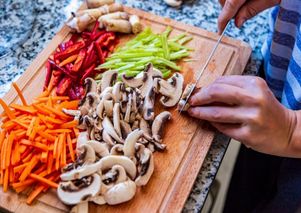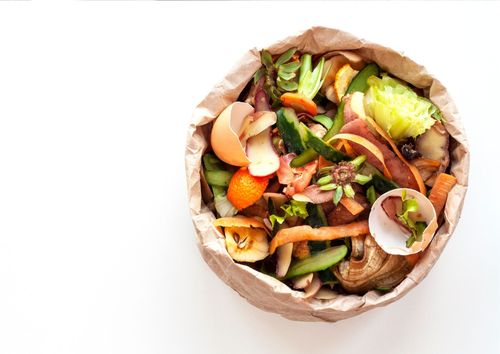Waste not, want not: Refuse to refuse your foods
by Guest Author,
- February 7, 2022
- Leave a comment
Hannah Page, student dietitian Curtin University
Picture the Melbourne Cricket Ground filled up four and a half times with groceries. That is how much edible food is wasted by Australian households each year. Australia’s household food wastage amounts to 2.5 million tonnes of food refuse turfed out of a total of 7.3 million tonnes of food discarded in the country.
Let’s take a deep (dumpster) dive and find out what’s going on!
What exactly is food waste?
Food waste is the unnecessary wastage of food that could have been eaten, mainly created at the very end of the food supply chain. While a big chunk of this waste is from cafes, restaurants, and supermarkets, there is also a significant amount that happens within our homes. Supermarkets will often bin edible produce because it fails to meet fruit and vegetable beauty standards – having the perfect shape, size, and colour, and we might catch ourselves doing the same.
Why we waste
Whether it’s because we don’t like brown spots on our bananas, or there’s leftovers languishing in the back of the fridge, Aussies tend to toss food too regularly. Our main reasons for disposing of delicacies are;
- Unfinished meals
- Too much food was prepared or served up
- Unwanted leftovers
- Concerns over food safety

The good news is that a lot of the reasons for food wastage at home can be avoided or reduced, which could possibly save up to $3,800 in groceries per year for each household.
Food waste vs the Earth
Not only does it cost you a pretty penny to waste food, our Earth and the environment are also being affected too. When food is thrown out it goes to landfill, where it starts to rot and produces the greenhouse gas methane. Methane is a large contributor to climate change, and the food waste generated by Australians produces the methane equivalent of 6.8 million tonnes of carbon dioxide. On a global scale, approximately 8% of the world’s greenhouse gas emissions come from food waste.
It’s not only food that gets wasted when it gets put in the bin. We also waste the natural resources that went into growing and producing the food, such as land, water, and energy. In fact, throwing away one medium dinner wastes about as much water as having a 90 minute shower! Any guesses as to the top foods found in our refuse each year? Knowing the most common ones might help to be a bit more proactive in saving them from bin.
Want to reduce your waste?
Changing a few small things at home can save you some extra spending money, and reduce your carbon footprint.
- Understanding ‘best-before’ and ‘use by’: The difference between the two is often confused. ‘Best before’ dates tell you when the food passes its best quality but is still safe to eat if it looks and smells fine. ‘Use by’ is a guide for food safety, and means food is not safe to eat after the date. Keep items that are close to their use by date at the front of the fridge and pantry so you don’t realise they are there after it is too late.
- ShareWaste app: If composting at home isn’t an option, ShareWaste allows you to connect with people near you who can recycle your kitchen scraps. These food scrap donations go towards private composting, worm farming or chicken keeping!
- Shopping lists: Planning out your weekly meals prevents shopping for food items you don’t need (and that may end up in the bin). Before leaving for the shops, check what food items you already have in your kitchen to create your meals.

- Grow your own: Lettuce, salad greens and herbs are notorious for being thrown out, so why not grow your own to reduce the waste. Supermarkets often sell herbs in quantities too large for households to finish before the ‘use by’ date. If you don’t have the garden space for growing herbs and greens, windowsills make a great alternative. Have you ever tried placing a bok choy or celery bulb in soil?

- Save your leftovers: One way to reduce leftover waste is to plate smaller portion sizes, as you can always go back for more. Use those leftovers you don’t eat as frozen meals for when the fridge is looking bare or for when you are short on time in the evenings.
Knowing what to do with your food will help reduce food wastage at home. Even using a couple of these food saving habits will start to reduce your waste, save you money and benefit the planet!
LiveLighter supports future health professionals through engagement with Australian Universities. This student blog was created for LiveLighter as part of Advanced Public Health Nutrition Practice coursework (Master of Dietetics at Curtin University, Western Australia).








